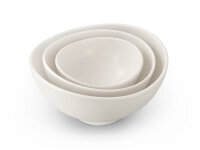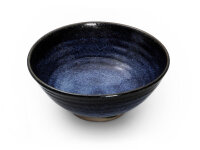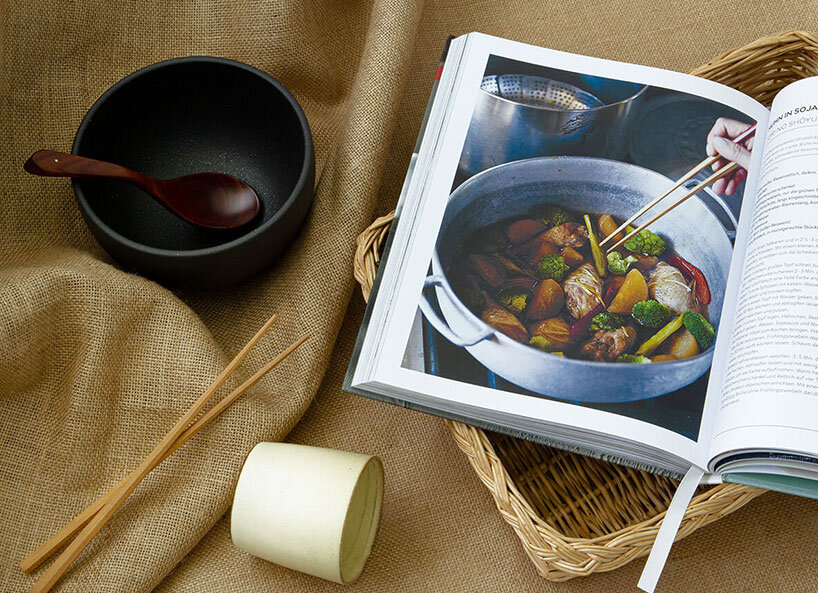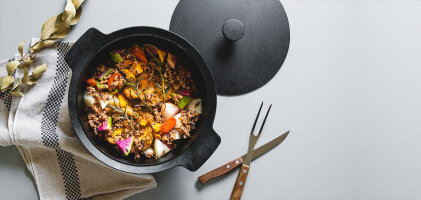Udon Noodles and How to Enjoy Them Best

Ramen, Somen, Soba, Shirataki, Udon... - in der asiatischen Küche gibt es so viele Arten von Nudeln, dass man leicht durcheinander kommt. Über die japanischen Nudelsorten Ramen, Soba und Shirataki haben wir schon berichtet. Nun wird es Zeit für Udon, die dicksten Nudeln Japans!

Delicious start to the fall
When the days get shorter and colder, Comfort Food takes center stage. One such dish in Japan is Udon. The thick wheat noodles form a basis for various dishes that provide warmth and satisfaction. A delicious Udon soup can be found in almost every eatery in Japan. There are also specialized restaurants where you can try different varieties.
There are many legends surrounding how long these noodles have been around and who brought them to Japan. What is certain, however, is that this method of preparing wheat noodles came to Japan, much like Ramen noodles, from Chinese cuisine. Initially, the noodles were a delicacy eaten by nobles and monks during festivals. It wasn't until the 17th century, when the gastronomy industry flourished, that the hearty Udon noodle soup became a popular snack among the Japanese.
Please slurp
The basis of most Udon recipes is the broth. It consists of Dashi (a broth made from water, konbu seaweed, and bonito fish flakes), soy sauce, and mirin, sweet sake. Depending on the recipe, the broth can be either milder or stronger. There are also regional differences: the broth in the Kanto region around Tokyo is hearty and thick, while in Kansai (Kyoto), you mainly find thin, light Udon noodle soup.
But the noodles themselves can also take on different shapes from place to place. Some are thick and chewy as in Kagawa or soft as in Fukuoka, others are flat like tagliatelle (Nagoya), thin like spaghetti (Akita), or even shaped like an ear (Sano).
The best thing about Udon noodles is their consistency. Thick and chewy, they glide smoothly into the mouth. That's why it's so practical, and even necessary in the Japanese way, to slurp while eating.
But beware: eating Udon noodles properly is easier said than done. Therefore, both locals and tourists in restaurants are given an apron with their dish. As with all Japanese soups, the rule is to eat the ingredients with chopsticks first, and then you can drink the flavorful broth. If Udon is served separately with a sauce, you pick up a handful of noodles with chopsticks and dip them into the sauce.
Variety of the thickest Japanese noodles
You can enjoy Udon noodles in various ways. Here are the most popular ones:
- Kake Udon: a simple, hot Udon noodle soup garnished with spring onions
- Kitsune Udon ("Fox Udon"): this version includes fried tofu in the soup
- Niku Udon: a hearty variation with lightly caramelized beef
- Tempura Udon: the noodles are served here with thinly fried tempura pieces
- Yaki Udon: stir-fried Udon noodles enjoyed with various vegetables
- Zaru Udon: in this summery version, Udon noodles are eaten cold, usually on a bamboo mat. A sweet and sour sauce and a garnish of seaweed complete the dish
Other variations differ in terms of ingredients: would you like a raw egg, tempura batter, Naruto fish cake, or Mochi rice cake in the soup? The latter is known for its strengthening effects. Therefore, noodles with Mochi are also called Chikara Udon - "Power Udon".
By the way, the raw egg has a special meaning, especially in the fall: it is supposed to represent the moon. This version of the noodle dish is called Tsukimi Udon, roughly translated as "Moon-viewing Udon," and is often eaten in September and October, fittingly for the Japanese moon-viewing festival.

Make your own udon noodles
The popular comfort food can be easily prepared at home. The noodles themselves consist simply of wheat flour, water, and salt. In well-stocked Asian markets, you can also find them as frozen or fresh noodles in the refrigerated section.
In the 2006 film "Udon," a family dramedy centered around Japanese noodles, it shows how they are made in the traditional way. Wheat flour (500 g), water (250 ml), and salt (15 g) are mixed to form a uniform dough. This dough is then kneaded with the feet - after a cloth or plastic wrap has been placed over it, of course. At home, this can be done with hands as well.
Next, the dough is divided into several equally sized balls, wrapped in plastic wrap, and allowed to rest for at least an hour. The longer the dough rests, the easier it will be to work with later. The dough is then kneaded again before being rolled out as thin as possible with some starch (corn or potato starch, alternatively a bit more flour). Fold the dough into thirds. Then, cut the dough into fine strips. The noodles are ready!
The noodles should then be cooked for 10 to 15 minutes until they are soft enough. After cooking, rinse with cold water to maintain chewiness. If they are to be eaten hot, you can dip them back into the hot noodle water before serving.
Udon soup or hearty fried noodles: The recipes
Once you have prepared your noodles (either homemade or cooked according to package instructions), you can do a lot with them. A tip: for fresh noodles from the refrigerated section, wash the noodles with cold water beforehand to prevent them from sticking together.
We will present you with recipes for Udon noodle soup and the fried variation.
Sanuki Udon
 2 portionsNo. of persons
2 portionsNo. of persons
 ca. 45 minutesTotal Time
ca. 45 minutesTotal Time
 easyLevel of difficulty
easyLevel of difficulty
 main mealDish
main mealDish
 ca. 450kcal per portionCalories
ca. 450kcal per portionCalories
 Fish
Fish
 Lactose-free
Lactose-free
 Alcohol
Alcohol
 Kitchenware
Kitchenware

This is the classic among Udon recipes. Popularized in Kagawa Prefecture on the eastern island of Shikoku, this specialty became one of the most popular throughout Japan.
Firstly, for almost every recipe with Asian noodles, you need a good broth. Below is a preparation for Dashi broth. For a vegetarian version with Miso, you can also use vegetable broth, which you can enhance with nori seaweed sheets, soy sauce, and mirin for added flavor.
Here, you should also prepare the miso soup separately. Simply put the miso paste in a smaller pot and add some of the boiling water over it, stirring until it completely dissolves. Only then does it go into the large pot after it has been removed from the heat.
|
800ml
water
|
|
400g
Udon noodles
|
|
1-2 tbsp
mirin (more depending on taste)
|
|
2
Konbu seaweed leaves
|
|
1-2 tbsp
soy sauce (more depending on taste)
|
|
20g
dried bonito fish flakes
|
|
2
Spring onions
|

Yaki Udon
 4 portionsNo. of persons
4 portionsNo. of persons
 ca. 45 minutesTotal Time
ca. 45 minutesTotal Time
 easyLevel of difficulty
easyLevel of difficulty
 main mealDish
main mealDish
 ca. 500kcal per portionCalories
ca. 500kcal per portionCalories
 Meat
Meat
 Fish
Fish
|
1
onion
|
|
3 leaves
cabbage or pak choi
|
|
2
Carrots
|
|
3 bunches
shiitake mushrooms
|
|
2
Spring onions
|
|
300g
pork or other meat, fish or tofu or vegetables as desired
|
|
1 tbsp
soy sauce
|
|
4 tbsp
stock or more (see Sanuki udon recipe, alternatively vegetable stock or ready-made Hon Tsuyu soup base from the Asian market)
|
|
400g
Udon noodles
|
|
Pickled ginger to taste
|





























-from-the-yakiyaki-grill-pan.jpg)




